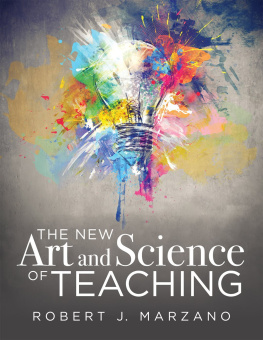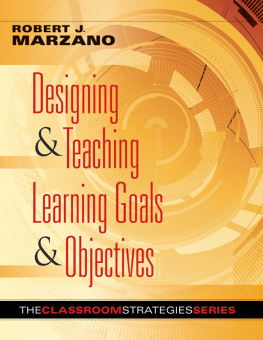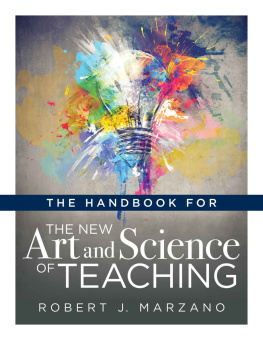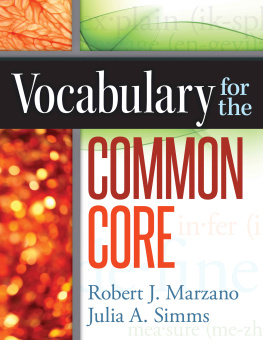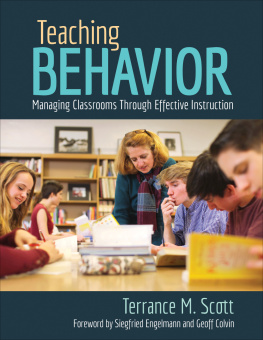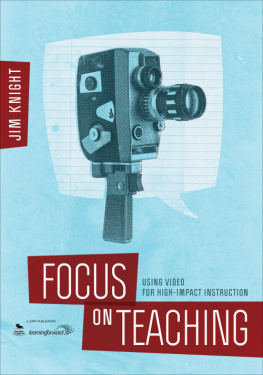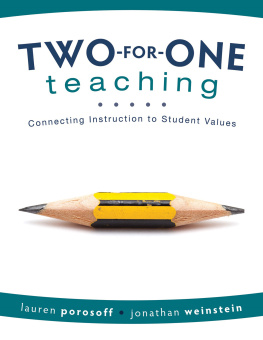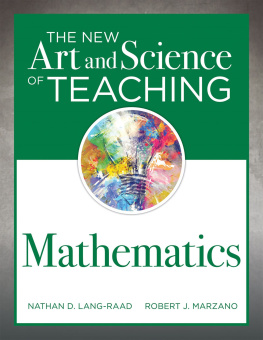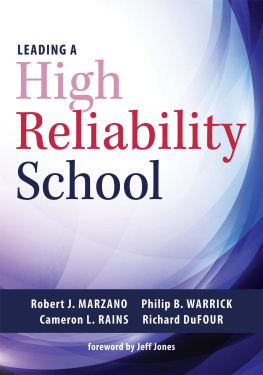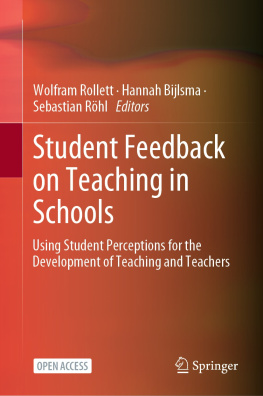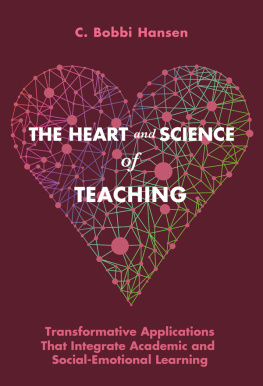
THE NEW Art and Science OF TEACHING

ROBERT J. MARZANO

Copyright 2017 by Solution Tree Press
All rights are reserved, including the right of reproduction of this book in whole or part in any form
555 North Morton Street
Bloomington, IN 47404
800.733.6786 (toll free) / 812.336.7700
FAX: 812.336.7790
SolutionTree.com
Visit go.SolutionTree.com/instruction to access materials related to this book.
Printed in the United States of America
21 20 19 18 171 2 3 4 5

Library of Congress Cataloging-in-Publication Data
Names: Marzano, Robert J., author.
Title: The new art and science of teaching / author: Robert J. Marzano.
Other titles: Art and science of teaching
Description: [Revised and expanded edition] | Bloomington, IN : Solution Tree Press, [2017] | Includes bibliographical references and index.
Identifiers: LCCN 2016049161 | ISBN 9781943874965 (perfect bound)
Subjects: LCSH: Effective teaching--United States. | Classroom management--United States. | Teaching--Aids and devices. | Learning, Psychology of.
Classification: LCC LB1025.3 .M3387 2017 | DDC 371.102--dc23 LC record available at https://lccn.loc.gov/2016049161
Solution Tree
Jeffrey C. Jones, CEO
Edmund M. Ackerman, President
Solution Tree Press
President and Publisher: Douglas M. Rife
Editorial Director: Sarah Payne-Mills
Managing Production Editor: Caroline Weiss
Senior Production Editor: Suzanne Kraszewski
Senior Editor: Amy Rubenstein
Proofreader: Ashante K. Thomas
Text Designer: Laura Cox
Cover Designer: Rian Anderson
Editorial Assistants: Jessi Finn and Kendra Slayton

Table of Contents

About the Author
Robert J. Marzano, PhD, is the cofounder and chief academic officer of Marzano Research in Denver, Colorado. During his fifty years in the field of education, he has worked with educators as a speaker and trainer and has authored more than forty books and three hundred articles on topics such as instruction, assessment, writing and implementing standards, cognition, effective leadership, and school intervention. His books include The Art and Science of Teaching, Leaders of Learning, The Classroom Strategies Series, A Handbook for High Reliability Schools, Awaken the Learner, and Managing the Inner World of Teaching. His practical translations of the most current research and theory into classroom strategies are known internationally and are widely practiced by both teachers and administrators.

He received a bachelors degree from Iona College in New York, a masters degree from Seattle University, and a doctorate from the University of Washington.
To learn more about Robert J. Marzanos work, visit marzanoresearch.com.
To book Robert J. Marzano for professional development, contact .

INTRODUCTION
The History of The New Art and Science of Teaching
The history of The New Art and Science of Teaching reaches back to the 1980s when my colleagues and I synthesized the research and theory on the effective teaching of thinking in the book Dimensions of Thinking (Marzano et al., 1988). Relatively soon after, I authored A Different Kind of Classroom (Marzano, 1992), which combines strategies for teaching thinking with more general strategies for classroom management, engagement, and assessment. These works present a comprehensive synthesis of the research on teaching and provide deep-level background to The New Art and Science of Teaching.
The more proximal ancestry of The New Art and Science of Teaching dates back to the turn of the 21st century. In the book Classroom Instruction That Works (Marzano, Pickering, & Pollock, 2001), my colleagues and I identify nine research-supported instructional strategies. In 2003, with my colleagues I wrote a companion book titled Classroom Management That Works (Marzano et al., 2003) and then another companion book in 2006, Classroom Assessment and Grading That Work (Marzano, 2006).
While I am gratified that each book has been relatively popular and influential, I am not pleased that some have interpreted them as listings of instructional strategies that are proven to enhance learning for students. In fact, the nine instructional strategies in Classroom Instruction That Works have been commonly referred to as high-yield instructional strategiesa term I do not endorse. To illustrate, one need only enter the phrase high-yield strategies into an Internet search engine and thousands of results will be generated. In fact, in 2009, I wrote an article, Setting the Record Straight on High-Yield Strategies (Marzano, 2009b), to counteract the growing incorrect belief that research could ever produce a list of instructional strategies that would guarantee student learning. Specifically, I note that no single instructional strategy can guarantee student learning for a number of reasons. One is that many factors other than the use of instructional strategies affect student learning. Another is that instructional strategies work in concert or sets and should not be thought of as independent interventions. Still another is that educators have to use strategies in specific ways to produce positive results.
Over time, I created an instructional model that ties the strategies, pieces, and points together in an interactive manner; it appears in The Art and Science of Teaching (Marzano, 2007). I chose the phrase art and science purposefully to communicate a message. Specifically, research and theory will never validate the notion that teaching is simply a set of preprogrammed moves manifested as strategies. Rather, instructional strategies are best likened to techniques an artist might develop and refine over years of practice. The artist then uses these techniques to create works that are not only unique and complex but elegantly focused. The more skill the artist exhibits with available techniques, the better his or her creations. Likewise, the more skill the classroom teacher has with the instructional strategies that research and theory have uncovered over the decades, the better the teacher will be able to create lessons that optimize student learning.
The New Art and Science of Teaching, then, represents my perspective on the current state of knowledge about effective teaching. It is a perspective that certainly draws from the past but also shines light on the possible future.
Next page
